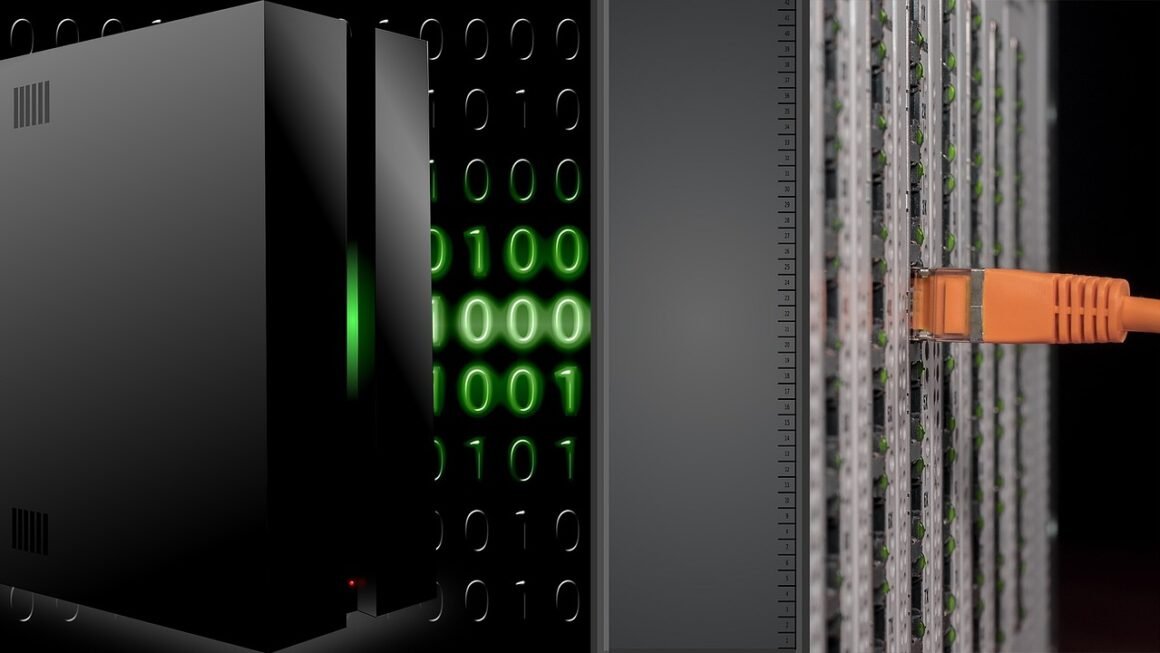Cyber espionage, a shadowy realm of digital intrigue, is no longer confined to the pages of spy novels. It’s a real and present danger to businesses, governments, and individuals worldwide. Understanding the tactics, motivations, and potential consequences of cyber espionage is crucial for building effective defenses and safeguarding sensitive information in an increasingly interconnected world. This blog post delves into the depths of cyber espionage, exploring its various facets and providing actionable insights to help you protect yourself from its reach.
Understanding Cyber Espionage
What is Cyber Espionage?
Cyber espionage, also known as cyber spying, involves using computer networks to secretly access sensitive data, intellectual property, trade secrets, classified information, or government data. Unlike cybercrime, which often aims for financial gain, cyber espionage is primarily driven by political, economic, or military motives. State-sponsored actors, hacktivist groups, and even competing businesses often engage in these activities.
- Key Differences from Cybercrime: While both involve unauthorized access, cybercrime typically seeks direct financial benefit, whereas cyber espionage focuses on intelligence gathering.
- Targets: Governments, corporations, research institutions, and individuals holding valuable information are all potential targets.
- Motivations: These can range from gaining a competitive advantage to acquiring military secrets or influencing political decisions.
The Scope of the Threat
Cyber espionage is a global threat, with state-sponsored actors posing the most significant risk. The digital landscape offers anonymity and ease of access, making it challenging to attribute attacks and hold perpetrators accountable.
- Statistics: Reports estimate that cyber espionage costs businesses billions of dollars annually in lost intellectual property and competitive advantage.
- Examples: Notable incidents include the theft of intellectual property from aerospace companies, the compromise of government databases containing personal information, and the infiltration of political campaigns.
- Geopolitical Implications: Cyber espionage activities can significantly impact international relations and national security.
Tactics and Techniques
Malware and Phishing
Malware, including viruses, Trojans, and spyware, is a common tool used in cyber espionage campaigns. Phishing emails are often used to trick individuals into downloading malicious software or revealing sensitive information.
- Spear Phishing: A targeted form of phishing that focuses on specific individuals within an organization. The emails are often highly personalized to appear legitimate.
- Watering Hole Attacks: Attackers compromise websites frequently visited by their target group and inject malicious code. Visitors unknowingly download malware.
- Example: An attacker sends a seemingly harmless email claiming to be from the IT department, requesting the recipient to update their password via a fake website. The entered credentials are then stolen.
Network Intrusion and Exploitation
Attackers exploit vulnerabilities in software and hardware to gain access to computer networks. Once inside, they can move laterally to access sensitive data.
- Zero-Day Exploits: Exploiting previously unknown vulnerabilities in software before a patch is available. These are highly valuable and often used in sophisticated attacks.
- Credential Theft: Stealing usernames and passwords to gain unauthorized access to systems and data.
- Lateral Movement: Once inside a network, attackers move from one system to another to gain access to more sensitive data.
- Example: Attackers exploit a security flaw in a web server to gain initial access. They then use stolen credentials to access databases containing customer information.
Social Engineering
Cyber spies often use social engineering tactics to manipulate individuals into divulging confidential information or granting access to systems.
- Pretexting: Creating a false scenario to trick someone into revealing information.
- Baiting: Offering something enticing, such as a free download, to lure victims into clicking on a malicious link.
- Quid Pro Quo: Offering a service in exchange for information, such as technical support in exchange for login credentials.
- Example: An attacker posing as a job recruiter contacts an employee and asks for sensitive information under the guise of processing their application.
Identifying and Preventing Cyber Espionage
Threat Intelligence and Monitoring
Staying informed about the latest threats and monitoring network activity is crucial for detecting and preventing cyber espionage attempts.
- Threat Intelligence Feeds: Subscribing to reputable threat intelligence feeds provides information about emerging threats and attack patterns.
- Network Monitoring Tools: These tools can detect unusual network activity, such as suspicious data transfers or unauthorized access attempts.
- Security Information and Event Management (SIEM) Systems: SIEM systems aggregate security logs from various sources and provide real-time analysis to identify potential threats.
- Actionable Takeaway: Implement a robust threat intelligence program and continuously monitor your network for suspicious activity.
Strengthening Security Posture
Implementing strong security measures can significantly reduce the risk of cyber espionage attacks.
- Strong Passwords and Multi-Factor Authentication (MFA): Use strong, unique passwords and enable MFA for all critical accounts.
- Regular Security Audits and Penetration Testing: Identify and address vulnerabilities in your systems and networks.
- Patch Management: Regularly update software to patch security vulnerabilities.
- Employee Training: Educate employees about cyber espionage tactics and how to avoid becoming victims of social engineering attacks.
- Data Loss Prevention (DLP) Solutions: DLP systems monitor data flow and prevent sensitive information from leaving the organization.
- Actionable Takeaway: Regularly assess and improve your organization’s security posture, focusing on both technical and human vulnerabilities.
Incident Response Planning
Having a well-defined incident response plan is essential for effectively responding to and mitigating the impact of a cyber espionage attack.
- Identification: Quickly identify the scope and nature of the attack.
- Containment: Isolate affected systems to prevent further damage.
- Eradication: Remove malicious software and compromised data.
- Recovery: Restore systems and data to their previous state.
- Lessons Learned: Analyze the incident to identify weaknesses and improve security measures.
- Actionable Takeaway: Develop and regularly test your incident response plan to ensure that you are prepared to handle a cyber espionage attack.
The Role of Government and Law Enforcement
National Security and Counterintelligence
Governments play a vital role in protecting national security by detecting, deterring, and responding to cyber espionage threats.
- Cybersecurity Agencies: Agencies such as the Cybersecurity and Infrastructure Security Agency (CISA) in the United States provide resources and guidance to help organizations protect themselves from cyber threats.
- Law Enforcement: Law enforcement agencies investigate and prosecute cyber espionage cases.
- International Cooperation: Collaboration between countries is essential for addressing cyber espionage threats that transcend national borders.
Legal Frameworks and Regulations
Legal frameworks and regulations help to deter cyber espionage and hold perpetrators accountable.
- Computer Fraud and Abuse Act (CFAA): A US law that prohibits unauthorized access to computer systems.
- Economic Espionage Act (EEA): A US law that criminalizes the theft of trade secrets for the benefit of a foreign government or entity.
- International Treaties: Treaties such as the Budapest Convention on Cybercrime provide a framework for international cooperation in combating cybercrime, including cyber espionage.
Conclusion
Cyber espionage is a persistent and evolving threat that demands vigilance and proactive security measures. By understanding the tactics used by cyber spies, strengthening your security posture, and implementing effective incident response plans, you can significantly reduce your risk. Staying informed about the latest threats and collaborating with government and law enforcement agencies are also essential for combating this complex challenge. The digital battleground is constantly shifting, requiring a continuous commitment to cybersecurity to protect valuable information and maintain a competitive edge.



